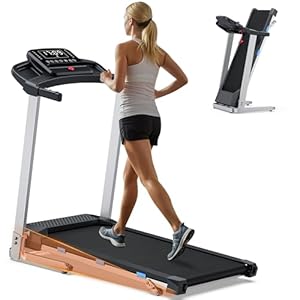
You’re hitting your stride with your running routine, but are you taking the necessary steps to protect yourself from common injuries? Whether you’re a seasoned runner or just starting out, understanding how to prevent issues like shin splints, plantar fasciitis, and runner’s knee can make all the difference in your training. So, lace up your shoes and get ready to discover the key strategies to keep you running strong and injury-free.
Shin Splints
If you’re a runner, shin splints can be a common and frustrating injury that often occurs due to overuse or improper running techniques. These sharp pains along the inner edge of your shinbone can really put a damper on your training routine.
To prevent shin splints, it’s crucial to ensure you have proper footwear that provides ample support and cushioning. Additionally, gradually increasing the intensity and duration of your runs can help your body adapt and reduce the risk of developing this painful condition.
When experiencing shin splints, it’s important to rest and allow your body time to recover. Ice packs and over-the-counter pain relievers can help alleviate discomfort. Stretching your calf muscles and engaging in strengthening exercises for your legs can also aid in preventing future occurrences of shin splints.
Plantar Fasciitis
To effectively address plantar fasciitis, incorporating proper footwear and targeted stretching exercises into your routine is essential for preventing and managing this common running injury. Plantar fasciitis is characterized by pain and inflammation of the plantar fascia, a thick band of tissue that runs across the bottom of your foot, connecting your heel bone to your toes.
When you run, especially on hard surfaces or with improper footwear, excessive stress is placed on the plantar fascia, leading to micro-tears and irritation. To alleviate this condition, ensure your shoes provide adequate arch support and cushioning to reduce strain on the plantar fascia. Additionally, performing regular stretching exercises that focus on the calf muscles and the plantar fascia itself can help improve flexibility and reduce the risk of injury.
If you experience symptoms of plantar fasciitis such as sharp heel pain or stiffness in the morning, it’s crucial to address them promptly. Ignoring the signs can exacerbate the condition and prolong your recovery time, hindering your running progress. By taking proactive measures to care for your feet, you can minimize the impact of plantar fasciitis and continue enjoying your runs pain-free.
Runner’s Knee
Runner’s Knee, also known as patellofemoral pain syndrome, is a common running injury that causes pain around or behind the kneecap. This condition is often a result of overuse, muscle imbalances, or improper running techniques. When you have runner’s knee, you may feel a dull, aching pain while running, going up or down stairs, or sitting for extended periods with your knees bent. The discomfort can worsen when running downhill or squatting.
To prevent runner’s knee, it’s essential to strengthen the muscles around your hips, thighs, and core to provide better support for your knees. Ensure that you have proper running shoes that offer adequate cushioning and support. Gradually increase your running intensity and mileage to avoid sudden stress on your knees. Additionally, cross-training with activities like cycling or swimming can help reduce the impact on your knees while maintaining your cardiovascular fitness. If you experience persistent knee pain, it’s crucial to rest and consult a healthcare professional for proper diagnosis and treatment.
IT Band Syndrome
Strengthening exercises and proper gear are vital in preventing IT Band Syndrome, a common running injury often caused by repetitive friction between the iliotibial band and the knee joint. The iliotibial band is a thick band of fascia that runs along the outside of the thigh, connecting the hip to the shin. When this band becomes tight or inflamed due to overuse or biomechanical issues, it can result in IT Band Syndrome.
To prevent this injury, focus on strengthening the muscles that support the hips and knees, such as the glutes, hip abductors, and quadriceps. Incorporating exercises like side leg lifts, clamshells, and squats into your routine can help improve overall hip and knee stability, reducing the strain on the IT band during running.
Additionally, wearing proper footwear with good cushioning and support can help absorb some of the impact and reduce the stress on your lower body. Ensuring that your shoes aren’t worn out and replacing them when needed is essential in preventing IT Band Syndrome.
Achilles Tendonitis
Proper stretching and gradual increases in intensity can help prevent Achilles Tendonitis, a common running injury that involves inflammation of the Achilles tendon. To avoid this painful condition, it’s crucial to incorporate dynamic stretches for your calf muscles before a run. This simple routine can help improve the flexibility of your Achilles tendon and reduce the risk of injury.
When increasing your running intensity or mileage, do so gradually to give your Achilles tendon time to adapt to the new demands. Sudden spikes in training can place excessive stress on the tendon, leading to inflammation and potential injury. Listen to your body and don’t ignore any signs of discomfort or pain in the Achilles area.
Investing in proper footwear that provides adequate support and cushioning can also play a significant role in preventing Achilles Tendonitis. Shoes that are worn out or lack proper arch support can contribute to increased strain on the tendon. By ensuring you have the right footwear for your running style, you can help protect your Achilles tendon from unnecessary stress and potential injury.
Stress Fractures
To prevent stress fractures while running, ensure you gradually increase your mileage and incorporate proper rest days into your training schedule. Stress fractures are tiny cracks in a bone, commonly occurring in weight-bearing bones of the lower extremities due to repetitive stress. These injuries can be painful and may require significant rest to heal properly.
When it comes to preventing stress fractures, listen to your body and avoid pushing through pain. If you start to feel persistent pain or tenderness in a specific area, it’s crucial to address it promptly to prevent further damage. Alongside gradual mileage increases, incorporating cross-training activities that are lower impact can help reduce the overall stress on your bones.
Furthermore, ensure your running shoes are in good condition and provide adequate support. Proper footwear can help absorb shock and reduce the impact on your bones while running. Lastly, maintaining a balanced diet rich in calcium and vitamin D can support bone health, reducing the risk of stress fractures. By taking these preventative measures, you can enjoy running while minimizing the risk of stress fractures.
Ankle Sprains
To prevent ankle sprains during your running routine, focus on improving your stability and balance. Ankle sprains are a common injury among runners, often caused by landing on an uneven surface or rolling your ankle during a run.
One effective way to prevent ankle sprains is by incorporating balance and stability exercises into your regular training regimen. Exercises such as single-leg squats, calf raises, and balance board drills can help strengthen the muscles around your ankle joint and improve proprioception.
Additionally, wearing proper footwear that provides adequate support and cushioning can also reduce the risk of ankle sprains. Make sure your running shoes are in good condition and appropriate for your foot type and running style. It’s essential to replace your shoes regularly to maintain their support and shock absorption capabilities.
Warm-up before your runs with dynamic stretches that target the muscles in your legs and ankles. A proper warm-up increases blood flow to the muscles, making them more pliable and less prone to injury. By taking these preventive measures, you can minimize the likelihood of experiencing ankle sprains and stay on track with your running goals.
Running














